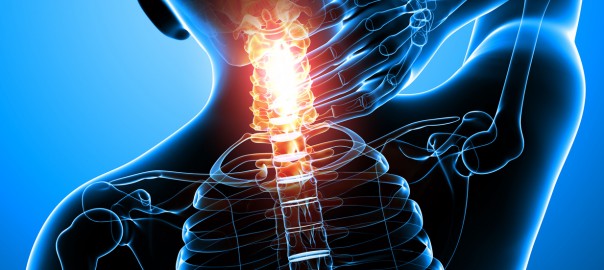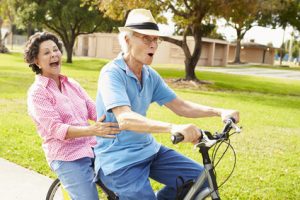As we again enter winter driving season, it is (unfortunately) necessary to revisit car accidents and one if their side effects:
Whiplash
It is one of the most common injuries sustained in a motor vehicle accident (MVA). As Physiotherapists and Massage Therapists we also see and treat whiplash sustained from falls and sports injuries.
The term “whiplash” is thrown around a lot.
“Whiplash” usually refers to a collection of symptoms in the neck and upper back resulting from the rapid negative acceleration experienced in a car accident. We often use the “Quebec Classification”1 to gauge severity of the condition:
Whiplash Associated Disorder (WAD)
| 0 | No neck pain, no signs of issues such as reduced range of motion |
| WAD I | Neck pain, stiffness or tenderness. No objective signs |
| WAD II | The above but with something objective such as reduced range of motion |
| WAD III | The above plus a neurological sign (loss of feeling, weakness etc) |
| WAD IV | Fracture |
While this classification system is helpful for aiding us in predicting how a person is going to progress after an accident, it doesn’t tell the whole story. Many people with relatively minor symptoms at onset report pain over a year later. Some people with more significant initial issues get better quite quickly.
How do we differentiate between someone who will recover slowly or quickly?
A group of researchers lead by a team from the University of Alberta attempted to answer this question. They conducted a systematic review of studies hoping to find a list of characteristics that predict a positive or negative recovery. In medical terminology, we call this ‘prognosis’. They did not pool their results in a meta-analysis unfortunately, but their research still helps us to make some interesting conclusions.
Negative predictors |
Inconclusive |
| Previous neck pain resulting in missed work | Sex |
| Feelings of helplessness | Age |
| Depression | Culture |
| Fear of movement | Job/Education |
| Frequent consultation with medical specialists | Type of accident (rear vs side vs front impact) |
| Litigation | |
| Passive coping |
The team found that women, older people and lower levels of education tended to trend towards the negative, but conflicting evidence makes it difficult to conclude for sure.2
Of interest to me is the point about coping.
This refers to how a person behaves in response to stress and plenty of research has shown in other conditions that how a person chooses to cope can impact their health outcomes. A 2014 study followed over 2000 persons after their car accidents and attempted to evaluate their coping style3 using the Vanderbilt Pain Management Inventory4 (at the bottom of the page).
From there, they categorized the participants into either low, medium, or high groups in both the active and passive category, as it is possible to have traits from both. Finally, they recorded the levels of pain and disability for all participants and compared it to their coping style, controlling for the variables mentioned earlier.
People in the medium passive coping group were 18% less likely to report having no pain at any time point, and the high group 28% less likely. For disability, the medium group was 25% less likely to report no disability and the high group 44% less likely. These differences account for variation in initial severity, sex, type of accident etc.
What is the take home?
Often a motor vehicle accident occurs outside of our control, but that does not mean our recovery works the same way.
For whiplash, an individuals’ coping style has a tremendous impact on how likely they are to recover.
This of course is not meant to say that simply having a positive attitude will be sufficient to recover, but it will certainly help.
How well do you cope?
Look at the questionnaire below. Read each query and answer based on how you believe you act/think when you have moderate to severe whiplash pain. Add up the responses to numbers 1-11 for your ‘Passive’ score, and numbers 12-18 for your ‘Active score. If you find you score greater than 26 in the passive category, it is a good idea to discuss strategies for dealing with pain with your Physiotherapist, Family Doctor, other health care practitioner, or friends and family. A healthy attitude can go a long way to helping you recover.
Tim Childs, PT
Registered Physiotherapist
MScPT, BA Kin
- Spitzer WO et al. Scientific monograph of the Quebec Task Force on Whiplash-Associated Disorders: redefining “whiplash” and its management. Spine. 1995;20(8):1-73.
- Carroll et al. Course and prognostic factors for neck pain in whiplash-associated disorders (WAD). Journal of Manipulative and Physiological Therapeutics. 2009; 32(2): S97-S107
- Carroll LJ, Ferrari R, Cassidy JD, Cote P. Coping and recovery in whiplash associated disorders: early use of passive coping strategies is associated with slower recovery of neck pain and pain-related disability. Clin J Pain. 2014;30(1):1-8
- Esteve MR, Ramirez C, Lopez AE. General versus specific indices in the assessment of chronic pain coping. Psychology in Spain. 2005;9(1):49-56



